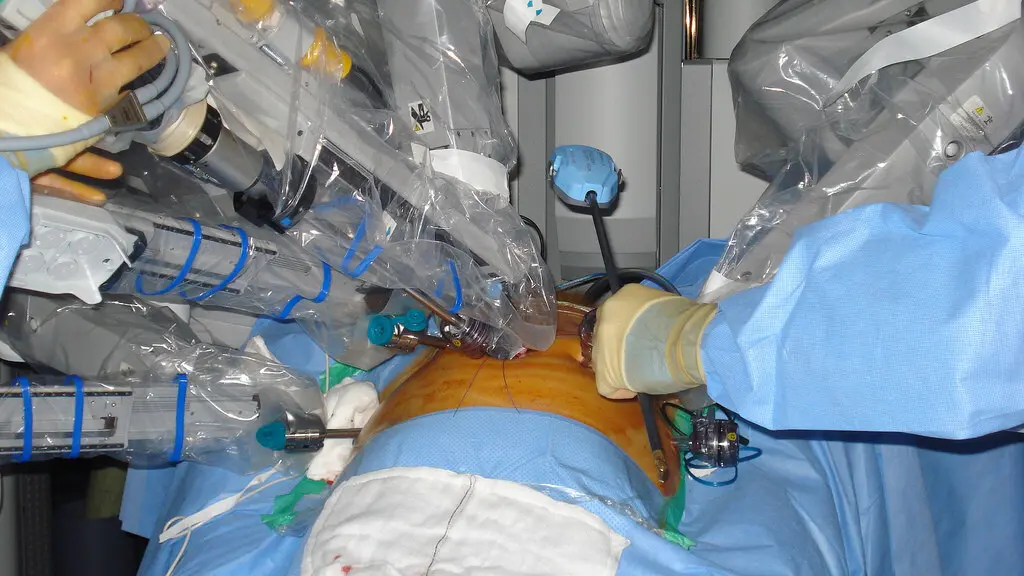- What is robotic prostatectomy?
Robotic Prostatectomy is a minimally invasive prostatectomy performed using a robotic surgical system. This technique allows surgeons safe removal of the cancerous prostate. During the procedure, all muscles and delicate nerves surrounding the affected prostate are spared. A trained surgeon will control the surgical robot. He/she will manipulate the mechanical arms of a robot from an operating room console, which is placed near to the patient’s bed. The surgery needs smaller incisions which reduce the amount of blood loss and postoperative recovery time.
- How does the procedure actually work?
The procedure is quite similar to the conventional, minimally invasive laparoscopic prostatectomy. The difference here is that the surgeon works from a special console in the operating room. Four precision-guided robotic arms are used by one of the most experienced and best robotic prostatectomy surgeons to cut and remove the prostate. A small video camera is inserted through a keyhole-sized incision. This will offer clearer magnified, 3-D images on the site of a prostate. The view allows doctors to get a clear view of the muscles and nerve bundles surrounding the affected prostate. The surgery is done with robotic arms offering 360-degree rotation capabilities. These are placed through other keyhole incisions to facilitate movement of the surgical instruments with greater precision, the range of motion and flexibility as compared to a standard laparoscopy.
The entire procedure will take around 2 to 3 hours under general anesthesia. Only a small amount of blood is lost during this procedure. The patients are supposed to spend only one night in the hospital. They are discharged the moment laboratory tests are acceptable. The doctor will also see if the pain is controlled and whether the patients can retain liquids. Patients are discharged with a special catheter. It will be removed 5-7 days after the procedure.
- How will the patient get benefitted with this procedure?
The operation involves removal of the prostate, seminal vesicles as well as the ends of the vas deferens. Pelvic lymph nodes may also be removed in intermediate and high-risk patients. Less pain and less amount of blood loss are experienced by patients. Other benefits include quicker recovery times, less stay in the hospital, and return to potency with or without the use of oral medications.
- What common risks are related to robotic prostatectomy procedure?
Similar to any major surgery done under general anesthesia, the patient will experience a certain amount of risk. These may include death, heart attack, and stroke. It is important to get a thorough preoperative assessment of patient’s overall health. Prostatectomies even those conducted with a robotic-assisted surgery method may pose risks of incontinence and impotence.
- Will the patient develop urinary continence?
The problem of urinary continence will be contingent on:
– The involuntary inner sphincter
– The voluntary striated inner sphincter
The inner sphincter is detached through all systems of prostatectomy, as it is functionally at the connection of the prostate and bladder. Performing specialized Kegel exercises after surgery to strengthen muscles enables patients to control their external sphincter and gain continence (dryness). This takes several weeks to several months. Generally, momentous urinary leakage occurs in only 0.5% of UC Davis patients. More than 15% of patients report mild stress incontinence.
- Will the patient experience issues with potency?
A number of psychological and physical factors are responsible for the return of normal erectile function. These include:
– The type of prostatectomy such as nerve-sparing, non-nerve sparing, unilateral, bilateral, etc.
– Hypertension
– Diabetes
– Obesity
– Atherosclerosis
– Smoking
– Anxiety
A normal function may return between one week and one year after surgery. Usually, it will take many months. The doctors will recommend a “penile rehabilitation” program wherein the patient is supposed to take medications such as Muse or Viagra. This is an integral part of the process to ease healing and return of erectile function.
- Is long-term follow-up procedure common with robotic-assisted prostatectomy?
Well as with any case of cancer, it is crucial to monitor for recurrence. Further cancer treatments later in life may or may not be needed by patients. This will depend on the pathology report after surgery. Usually the physician prepares a detailed post-operative action plan for the patient. This may include periodic measurement of blood PSA. This is known to be the best indicator of recurrence of cancer.
Please feel free to leave your comment about Robotic Prostatectomy below.
=====================================================================

Say Hi to SelfWeightLoss’s Guest Authors! Many talented authors have submitted their article and contributed to get it bigger. Browse through this page. You may find the right author for you. If you think you would like to contribute to the blog, Please visit this page: https://selfweightloss.com/write-for-us and follow its guidance. Thank you!









